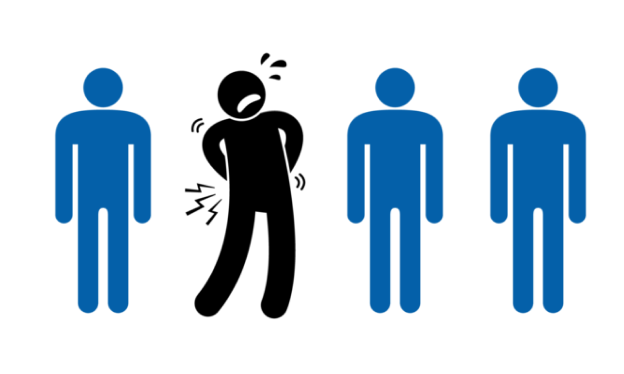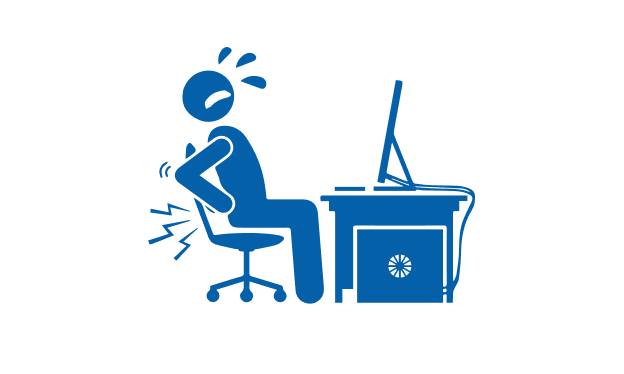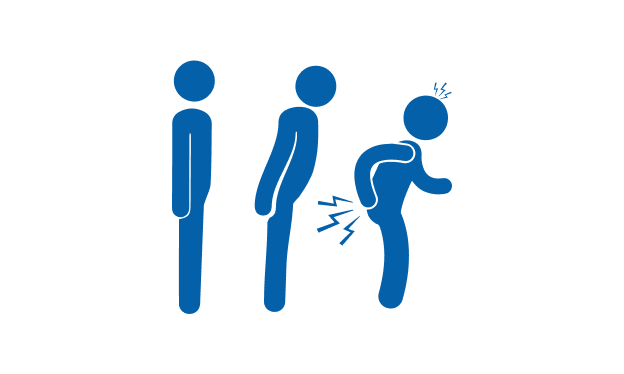What is Ankylosing Spondylitis?
Ankylosing Spondylitis (pronounced ank-kih-low-sing spon-dill-eye-tiss), popularly known as AS is a gradually progressing, chronic arthritis-like illness that affects the spine. It is very often neglected or overlooked during the early stages.[1][2]
'ANKYLOSE'
Means fusion or to fuse[3]
'SPONDYLITIS'
Means inflammation of the backbone[1]
A diagnosis like this can be difficult to get a grip on, especially since it appears to be just a nagging lower back pain.
Ankylosing Spondylitis affects the joints of the hips, lower limbs, and neck. Around 0.9% of the general population is diagnosed with Ankylosing Spondylitis and it more often strikes men in the second or third decade of life.[1] It most often affects the sacroiliac joints, which are located at the base of the spine, where the spine meets the pelvis. Sometimes the eyes and bowels can also get involved.[4]
It presents as constant pain (felt deep in the buttock or lower back) followed by stiffness and fatigue.[1][5] Fatigue is usually a consequence of pain, stiffness and poor sleep.[4] While these symptoms are commonly observed, unseen in the background, the spinal bones may undergo certain changes, termed as Fusion.[1]
Fusion of the spinal bones cannot be seen or felt on examination but can be detected by an imaging test.[1]Studies show that around 70% of patients progress to the fusion of the spine over 10 to 15 years.[4][5][6]
Fusion is the result of inflammation leading to the formation of tiny new bones in between the existing spinal bones. And what could be the impact of spinal fusion? Immobility, which may have serious consequences.[1]
Recent research has brought to light some important facts regarding Ankylosing Spondylitis:

1 out of every 4
Ankylosing Spondylitis patients shows some sign of damage to the spinal bone as early as 3 years after diagnosis.[7]

AS impacts movement
and the ability to do daily tasks within the first 10 years of the disease.[6]

7 out of 10
patients with Ankylosing Spondylitis have a fused spine within 10 to 15 years of onset.[8]
References
- Sieper J, et al. Ann Rheum Dis 2002;61(Suppl III):iii8–iii18
- Arthritis and Ankylosing Spondylitis Available [Online] at: https://www.webmd.com/back-pain/guide/ankylosing-spondylitis#1 Accessed on 20th Sep 2021
- Medical definition of Ankylosis. Medicine.net. Available [Online] at: https://www.medicinenet.com/script/main/art.asp?articlekey=30706 Accessed on 20th Sep 2021
- Gran JT, et al. British Journal of Rheumatology 1997;36:766-771
- Deodhar AA, et al. Arthritis Rheumatol. 2016 Dec;68(12):2901-2910
- Brophy S , et al. J Rheumatol 2002 Jun;29(6):1236-43
- Kang KY, et al (2015). PLoS ONE 10 (8): e0135206. doi:10.1371/- journal.pone.0135206
- Barkham N, et al. Rheumatology 2005;44:1277–1281
Disclaimer: This material is not meant to replace professional advice from HCPs. Please consult your doctors/physiotherapist if you have any questions or before undertaking any physical activities.
Curated Tags